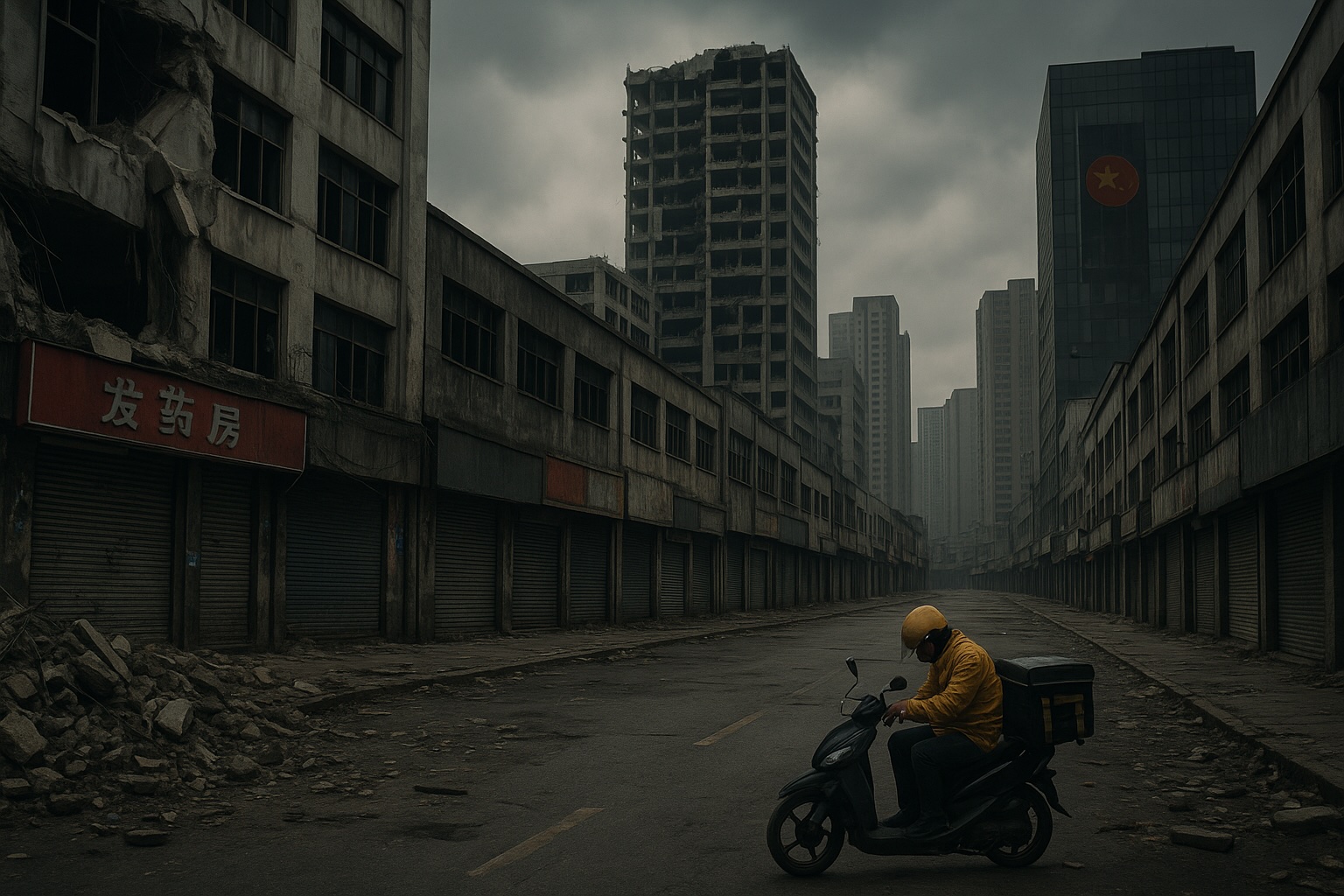China’s Hangzhou Crumbles as Business and Industry Collapse

Hangzhou, once a beacon of prosperity and innovation, is now a city haunted by economic distress. Once a dream destination for millions, a hub of technological growth, and a symbol of China's forward momentum, it has become eerily empty. The thriving ambition that once characterized its streets has faded, leaving behind a hollowed-out metropolis grappling with financial instability and mass exodus.
For decades, Hangzhou was celebrated as one of China’s most prosperous urban centres, attracting entrepreneurs, live-streamers, and ambitious professionals eager to carve their path in the city’s booming economy. In 2022, the city gained 172,000 new residents, reflecting its status as an economic powerhouse. However, the tides have turned drastically—by 2025, only 146,000 remain, with thousands fleeing in search of opportunities elsewhere.
Hangzhou’s economic downturn is visible in every corner of the city. Once a thriving hub of commerce and innovation, it now struggles with declining business activity, high unemployment, and mass departures. The Leing International Centre, once home to over 20,000 internet celebrities, has seen its occupancy plummet to just 8,000. Once known as "Drifter’s First Stop," the building has lost its former economic vitality.
With a history spanning over two millennia and admiration from figures like Marco Polo, Hangzhou now faces a crisis marked by vanishing physical stores and struggling business owners. Corporate leaders are cutting costs, while small enterprises are collapsing. As businesses fight for survival, ordinary workers bear the brunt, facing job scarcity and financial instability.
Hangzhou’s workforce is facing immense pressure as economic activity dwindles. Delivery riders, both men and women, sit idly for hours, waiting for orders that never arrive. Once thriving night markets have become financial traps, where vendors struggle to make enough to break even. Local consumers have disappeared, and even visitors who once fuelled the economy are hesitant to spend.
The factory closures have only worsened the crisis, leaving thousands unemployed. Job seekers far outnumber available positions, with a staggering 10-to-1 ratio per job opening. Even labour-intensive roles that provide food and lodging are scarce, and employers are overwhelmed. Many applicants report being ignored after basic inquiries about wages and benefits.
Hangzhou’s excellent infrastructure is now overshadowed by its rising cost of living. Rent ranges from 1,000 to 1,500 Yuan ($139 to $208) for a small room, while basic monthly expenses reach 3,000 Yuan ($419). Restaurants are empty, markets struggle, and delivery drivers see fewer orders. Some blame shifting consumer habits, such as pre-cooked meals and bulk buying, for the disappearance of traditional commerce, leaving businesses and workers in crisis.
In 2024 alone, estimates suggest that between 100,000 to 200,000 people left Hangzhou in search of financial stability elsewhere. Previously bustling urban villages now stand eerily empty, with rent dropping to a few hundred yuan—yet even at such lowered prices, there are few takers.
Offline retail has suffered catastrophic damage. Some netizens estimate that 80% of Hangzhou’s physical shops have shut down entirely. Streets that once housed 100 thriving businesses last year now have fewer than 20 barely hanging on.
Hangzhou’s real estate market has plunged into crisis. Homes once valued at 8 million Yuan now sell for just 2 million, yet buyers remain scarce. Developers are desperately cutting prices, but demand has evaporated. The city has around 360,000 unsold properties—far beyond what can be sold within a century. While official prices remain high, actual transaction values are sinking, leaving homeowners trapped in financial distress. Nearly a quarter of families face insolvency, with no viable path to recovery.
China’s trade war and collapsing demand have hit Zhejiang Province, home to Hangzhou, particularly hard. In 2024, Zhejiang’s foreign trade orders plunged by 58.4%, with 71.4% of its GDP previously dependent on trade with the United States. The fallout has been devastating, leaving many businesses unable to sustain themselves.
Reports suggest that over 80% of Ningbo’s manufacturers are on the verge of bankruptcy. Some companies, which once boasted multimillion-Yuan output, now struggle to make even 100,000 Yuan ($14,000) annually. Many factories have shut down entirely, leaving workers scrambling for any source of income.
The desperation has spread to all sectors. Retail store owners burn through savings, ruin their health, and still end up in debt. Street vendors in Hangzhou’s night markets are working tirelessly, yet failing to cover stall fees. At 10 p.m., the markets are empty—no customers, just vendors staring hopelessly at their phones.
Every year, the economic spiral worsens, pushing businesses, workers, and residents to the brink of collapse. Hangzhou, once a thriving metropolis and a symbol of China’s economic strength, is now a cautionary tale of financial ruin. The city’s descent into despair highlights the fragility of its industries and the unchecked consequences of broader economic policies.
With businesses crumbling, employment drying up, and workers barely surviving, Hangzhou’s fate in 2025 is not just a story of economic decline; it is a tragedy unfolding in real time.




![From Kathmandu to the World: How Excel Students Are Winning Big [Admission Open]](https://nepalaaja.com/img/70194/medium/excel-college-info-eng-nep-2342.jpg)
